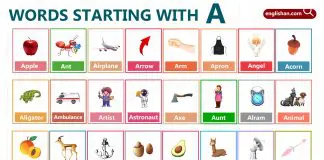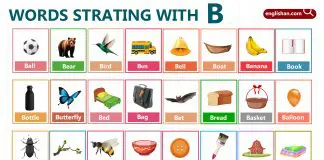Contents
Learning colors is an essential step in a child’s development. Colors Names for Kids help them understand the world around them. When children start to identify and name different colors, they begin to build their vocabulary and enhance their cognitive skills. This post will teach you some simple color names that every kid should know, making learning fun and easy!
Colors for Kids
We can categorize the List of Colors Names for Kids into different groups based on common themes. Here’s a suggested categorization:
1. Primary Colors
Primary colors are the basic colors that cannot be made by mixing other colors. These colors form the foundation for creating all other colors.
- Red: The color of apples and strawberries.
- Blue: The color of the sky and ocean.
- Yellow: The color of the sun and bananas.
2. Secondary Colors
Secondary colors are made by mixing two primary colors. These new colors are fun and bright!
- Green: A mix of blue and yellow, like the color of grass.
- Orange: A mix of red and yellow, like the color of pumpkins.
- Purple: A mix of red and blue, like the color of grapes.
3. Warm Colors
Warm colors remind us of heat, fire, and energy. These colors names for kids are great for teaching feelings of coziness and excitement.
- Red: The color of fire and warmth.
- Orange: The color of sunsets and pumpkins.
- Yellow: The color of sunshine and cheerful things.
- Amber: A warm golden-brown color, like honey.
4. Cool Colors
Cool colors are calm and relaxing. They make us feel peaceful and cool, like the sea or the sky.
- Blue: The color of the sky and ocean.
- Green: The color of grass, trees, and nature.
- Cyan: A light blue-green color, like the water in a pool.
- Teal: A mix of blue and green, like the deep ocean.
5. Neutral Colors
Neutral colors are softer and don’t stand out too much. They are often used for backgrounds or to balance out brighter colors names for kids.
- Black: The color of the night sky.
- White: The color of snow and clouds.
- Gray: A soft, neutral color, like clouds on a rainy day.
- Brown: The color of wood, chocolate, and dirt.
- Beige: A soft, light brown color, like sand.
- Cream: A soft, off-white color, like vanilla ice cream.
6. Bright and Fun Colors
These colors are bold and vibrant. They stand out and are fun to use in designs and art.
- Pink: The color of cotton candy and pretty flowers.
- Magenta: A bright pinkish-purple color.
- Lavender: A soft purple color, like the flowers in a garden.
- Peach: A soft orange-pink, like a ripe fruit.
- Aqua: A bright blue-green color, like the ocean on a sunny day.
7. Metallic Colors
Metallic colors shine and sparkle like metal. These colors are special and often used to add some extra shine!
- Gold: A shiny, yellow color, like a medal or treasure.
- Silver: A shiny, gray color, like a spoon or coin.
8. Dark and Bold Colors
These colors are rich and deep, often included in colors names for kids to help them learn about shades used in fashion and designs that convey strength and seriousness.
- Navy: A dark blue, often used in uniforms.
- Maroon: A deep red color, like the leaves in autumn.

Interesting Facts About Colors Names
- Red is often the first color kids recognize.
- Blue is one of the most popular favorite colors for children.
- Green is associated with nature and calmness.
- Yellow is linked to happiness and energy.
- Purple is often called a royal color because of its history.
FAQs for Colors Names for Kids
The three primary colors are:
1. Red
2. Blue
3. Yellow
These colors are called ‘primary‘ because they can’t be created by mixing other colors together. You can mix them to create many other colors!
There are many types of colors, but here are the main categories:
1. Primary Colors: Red, Blue, Yellow
2. Secondary Colors: Green, Orange, Purple
3. Tertiary Colors: Red-Orange, Yellow-Green, Blue-Purple
4. Warm Colors: Red, Orange, Yellow
5. Cool Colors: Blue, Green, Purple
Here are the names of 12 colors:
1. Red
2. Blue
3. Yellow
4. Green
5. Orange
6. Purple
7. Pink
8. Brown
9. Black
10. White
11. Gray
12. Beige
Conclusion
Colors are an essential part of a child’s learning journey. Teaching colors names for kids helps them recognize, describe, and enjoy the world around them. Start with everyday objects and encourage your child to notice and name different colors in their surroundings.
You May Also Like








